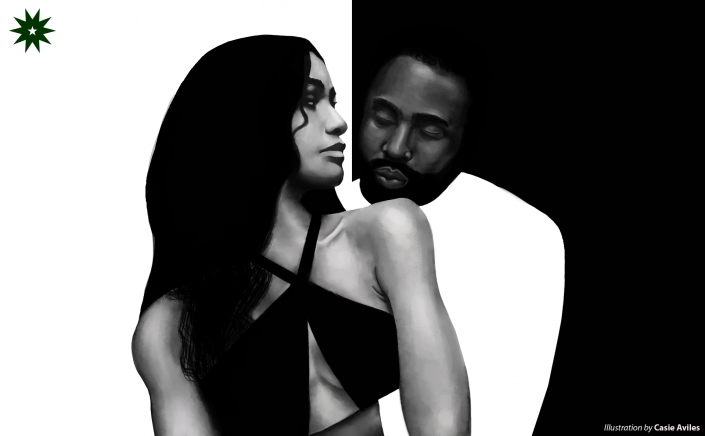
As the movie industry faces restrictions during the ongoing pandemic, Netflix’s Malcolm & Marie was the perfect opportunity for a back-to-basics movie-making approach—one set, two powerhouse actors, and an explosive script. Arriving home late at night after rising director Malcolm’s (John David Washington) successful movie premiere, his celebratory mood is disrupted by his girlfriend Marie’s (Zendaya) simmering anger. Brimming with emotion and hostility, the limited space the movie occupies mimics the experience of how people stuck together in lockdown are forced to confront their issues with each other.
Writer and director Sam Levinson’s stylistic choices convey stark simplicity—the film was shot in black-and-white, paired with a minimalistic jazz score, and set in a sparsely-decorated house. But don’t be fooled—Malcolm & Marie is a wild rollercoaster ride of jabs, barbs, and the director’s overreaching ambition. Whether Levinson’s gamble pays off though, is another matter entirely.
In black and white
Right from the get-go, the film makes it clear that its story takes center stage;the technical aspects are only mere vessels for Malcolm & Marie’s elaborate chess game. The chiaroscuro lighting effectively pronounces the tonal and expressive shifts of the couple as the story takes us through its twists and turns. The cinematography illustrates character motivations, with the camera framing Malcolm in a close-up during his outbursts that his self-absorption is at its highest peak. In a similar fashion, he is confined within the echo chambers of his filmmaking biases as much as their home breathes in isolation.
The characters’ positionings are no happenstance either, deliberately mirroring the power dynamics of their relationship. Malcolm huffs and puffs around the house on his endless tirades, while Marie silently observes him with a jutted chin and critical eyes. Mise-en-scènes in their living room also include Marie in a lying down position, as she almost blends into the furniture—barely more than a prop to Malcolm’s soliloquies. They circle each other like predator and prey, often ending with one cornered. And just when you think that victory is assured, the other rears back to give as good as they get.
Toxic love
While the argumentative back-and-forth and the captivating performances of Washington and Zendaya make for a very engrossing first half-hour, the schtick quickly becomes exhausting to watch. Malcolm and Marie drift from room to room, leaning on overhanded emotional deliveries and arguments that mechanically start again like a wind-up toy. For all its self-aggrandizing and navel-gazing, the film never really offers anything Who’s Afraid of Virginia Woolf? or Marriage Story hasn’t already done better.
The conflict also delves into the lopsided dynamic between creator and muse, bringing up thought-provoking insights regarding the use of female trauma by male creators to siphon authenticity and sensitivity in their work. Zendaya is at her best when Marie vibrates with the righteous indignation of a woman whose wounds are exploited for a man’s ambition, sliced open for the sake of a good story. It is at this fever pitch when the film is at its most political that it is also at its most memorable.
Which is why when the film resorts again and again to using Malcolm as the director’s mouthpiece to deliver tirades against “woke” film critiques,Levinson seals his film’s own fate. There is no elegance or depth in Levinson’s attempts at crucifying criticism, and this does no favors for Washington’s performance either. Malcolm & Marie circles the drain faster than you can say, “gravitas.”
No, thank you
While promising at the onset, the film’s stubborn denial of white male privilege is too heavy a sin for redemption, despite the two stars’ earnest performances.
Malcolm & Marie tries desperately to be self-aware with lines like, “It’s about the illusion you wanna create that filmmaking isn’t a collaborative effort. It’s you, and everybody else is just following the f—— directions,” but this self-awareness ends where Levinson’s vanity begins. With its cast and premise, the film could have been magic in the right hands—a searing look at the power dynamics of art and love, but instead, it implodes and sputters into mediocrity with an ending that should have been 10 minutes shorter.
Perhaps nothing else can embody the film’s wasted potential better than Marie herself, who remorsefully says, “Because I would’ve been good. Maybe even better.”
Rating: 2.5/4.0
